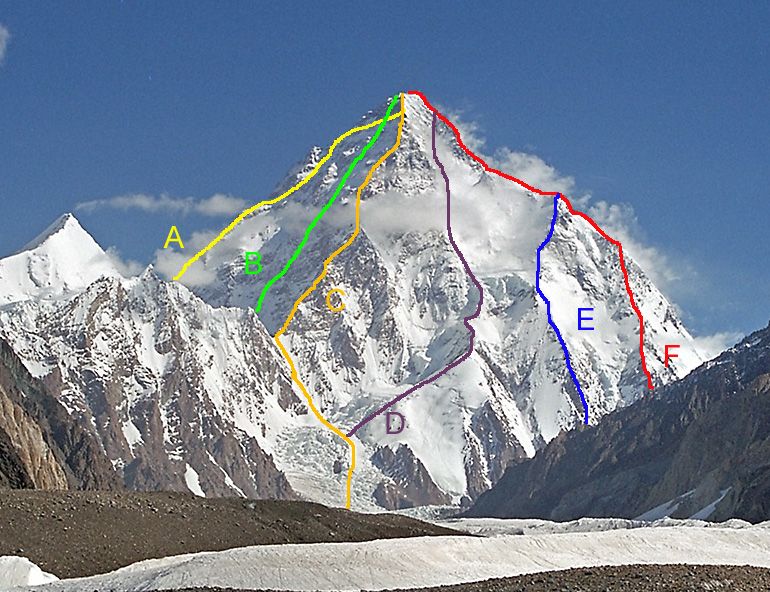5. Solved exercises
 |
| By Szumyk. GNU Free Documentation License and C. Commons |
When he realised Paco and the others were so interested in the topic, he continued talking about the early expeditions to K2:
"The mountain was first surveyed by a European survey team in 1856. Thomas Montgomerie was the member of the team who designated it "K2" for being the second peak of the Karakoram range. The other peaks were originally named K1, K3, K4 and K5, but were eventually renamed Masherbrum, Broad Peak, Gasherbrum II and Gasherbrum I respectively.
The first serious attempt to climb K2 was undertaken in 1902 by Oscar Eckenstein and Aleister Crowley. After five serious and costly attempts, the team could only reach up to 6,525 metres. The failures are attributed to a combination of questionable physical training, personality conflicts, and poor weather conditions.
The next expedition to K2 in 1909, led by Luigi Amedeo, Duke of the Abruzzi, reached an elevation of around 6,250 metres on the South East Spur, now known as the Abruzzi Spur (or Abruzzi Ridge). This would eventually become part of the standard route, but was abandoned at the time due to its steepness and difficulty. After trying and failing to find a feasible alternative route on the West Ridge or the North East Ridge, the Duke declared that K2 would never be climbed.
 |
| By Kogo and lain99. GNU Free Documentation License and C. Commons |
The next attempt on K2 was not made until 1938, when an American expedition led by Charles Houston made a reconnaissance of the mountain. They concluded that the Abruzzi Spur was the most practical route, and reached a height of around 8,000 metres before turning back due to diminishing supplies and the threat of bad weather. The following year an expedition led by Fritz Wiessner came within 200 metres of the summit, but ended in disaster when four climbers disappeared high on the mountain.
Listen to an read the text carefully. Click below if you have further problems with vocabulary.
Answer the following questions,
1. According to the text, has the mountain with the highest fatality rate ever been climbed in winter?
2. According to the text, why was the savage mountain called K2?
3. According to the text, is the American expedition led by Charles Houston important? Why?
Reported speech: Devaj told them he would tell them about the first expeditions to K2 then.
It is important that you learn how to report other people's feelings or opinions, not only because it may be asked in the PAU tests but also because it is necessary if you want to narrate your or other people's experiences.
Rewrite the following sentences in the reported speech.
1. "For every four people who have reached the summit, one has died trying", Devaj said.
Devaj said (that) for summit, trying.
2. "The first serious attempt to climb K2 was undertaken in 1902 by Oscar Eckenstein", he said.
He explained that climb K2 1902 by Oscar Echenstein.
3. "The Duke declared that K2 would never be climbed", Devaj assured.
Devaj assured (that) the Duke .